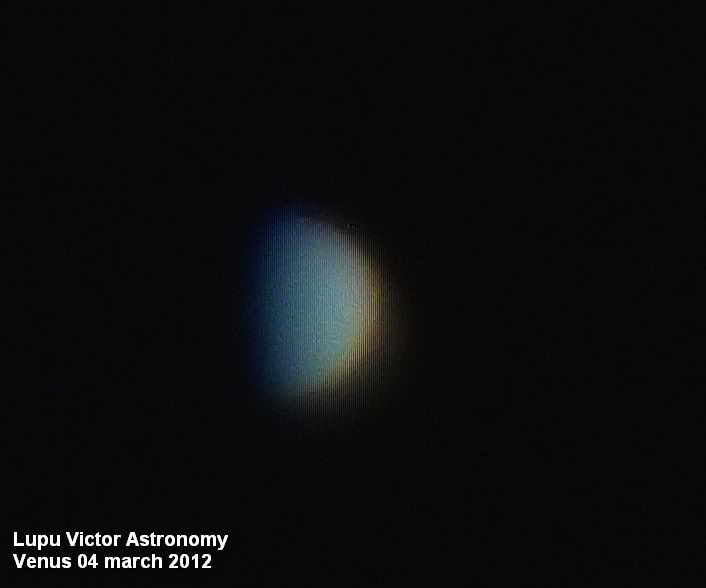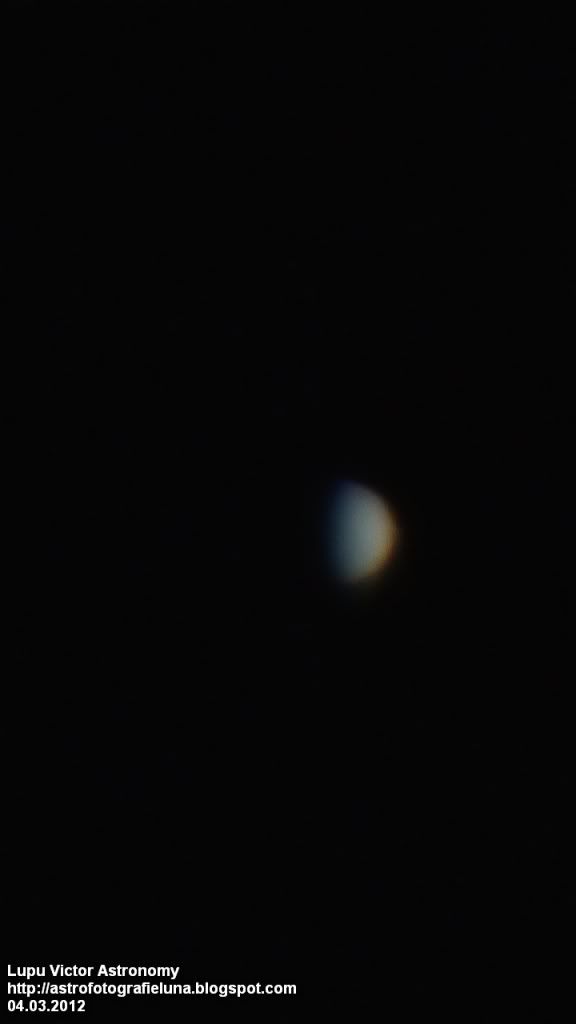

| Visitors Now: | |
| Total Visits: | |
| Total Stories: |

| Story Views | |
| Now: | |
| Last Hour: | |
| Last 24 Hours: | |
| Total: | |
Venus Planet Pictures By Astronomical Telescope In March 2012
http://lupuvictor.blogspot.com
The pictures above are video captures of the planet Venus. Atmospheric pollution was the lowest of all other days when I observed this planet.
Venus is the second planet from the Sun, which it orbits every 224.7 days. Planet is named after the goddess of love and beauty, Venus. After the Moon, it is the brightest object in the night sky, reaching an apparent magnitude of -4.6. Since Venus is the planet nearest the Sun than Earth, its elongation reaches a maximum of 47.8 °. Venus reaches maximum brightness shortly before sunrise or shortly after sunset, so it is known as 'morning star' or 'evening star', or, popular.
Photographer: Victor Lupu
Optics: Celestron C8 inch -Newtonian telescope, plossl 20mm, 2x Barlow
Mount: CG5 (EQ5)
Device: Sony CX130
Filter: no
Date: 04/03/2012
Location: Baia Mare, Romania
Processing: video capture, FastStone Image Viewer
Read more at LUPU VICTOR ASTRONOMY
Source:






“known as ‘morning star’ or ‘evening star’,”
From the wiki.
“Lucifer (as a noun) means “light-bearer” (from the words lucem ferre). It was the name given to the Morning Star, i.e. the planet Venus when seen at dawn.”